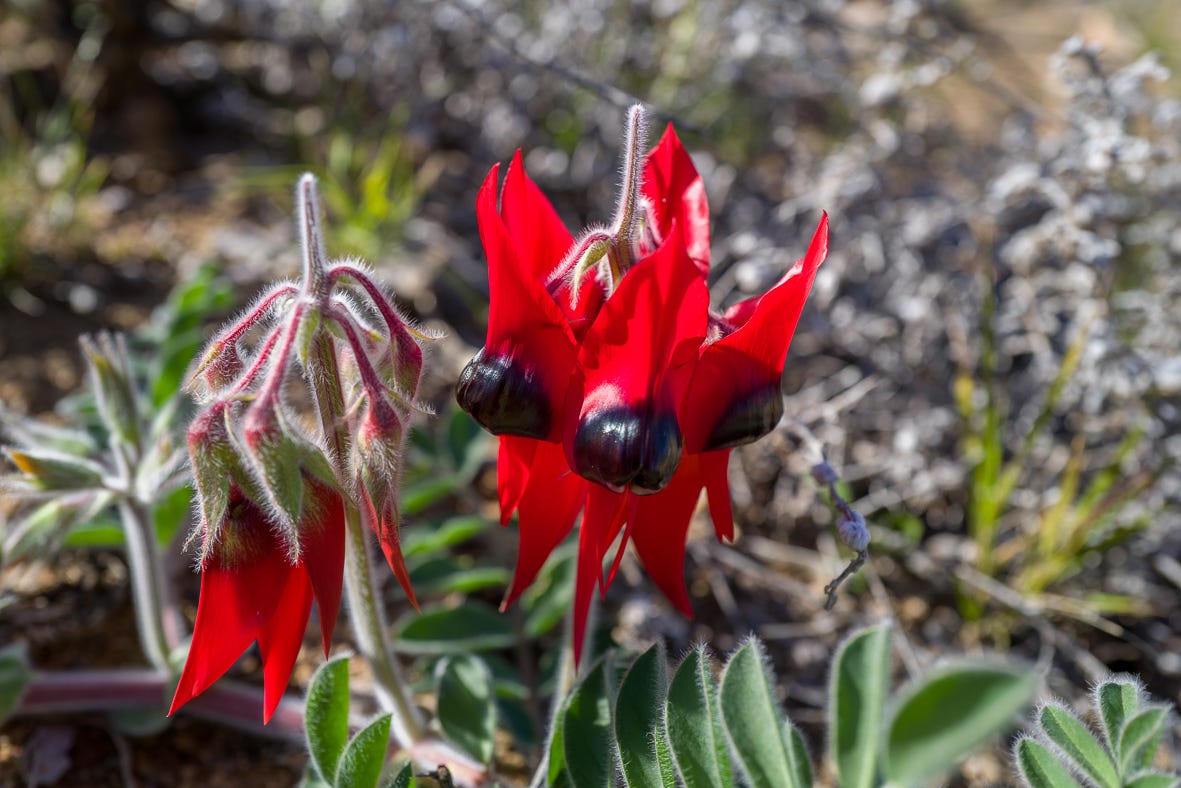On Sunday we headed down the Silver City Highway 40km to Milparinka. It is no longer a functioning town, with a population of nine, but is a historic reminder of the gold-digging past and to Sturt’s exploration. There was a pub, which is open for accommodation, meals, and alcohol. We stopped in and chatted to the lady behind the bar to discover she was from Ringwood and comes up every year to help her friend who owns the pub. After wandering around the ruins and the two museums we went out to see Poole’s grave and cairn. Poole was part of Sturt’s party. They were stuck nearby Milparinka for six months waiting for the land to dry out so they could travel. Unfortunately, there was a lot of disease and illness and Poole died. Sturt had got his men to build this giant cairn to keep them occupied.
Ruins at Milparinka
The cairn that Sturt’s men built in 1845
A sculpture representing Sturt’s cairn at the entrance to Milparinka
Milparinka museum and court house
On Monday, we headed off on the first of our day trips into Sturt National Park. Dead Horse Gully Campground was only a short distance from Tibooburra off the Silver City Highway. There was a short one-hour walk around the spectacular granite outcrops found in that part of the park. The granite tors, large irregular-shaped rocks as a result of erosion, contrast against the sandy soil and the green vegetation. The exception to the green was our surprising discovery of a single lone Sturt’s Desert Pea flower, the bright red of its petals, and the black eyes, standing out against the otherwise muted colours.
Granite tors at Dead Horse Gully
Sturt’s Desert Pea
After our picnic lunch at the Dead Horse Gully campground, we went to the Golden Gully Historic Site, a reconstructed mining site nearby.
Reconstructed mining equipment - a whim for drawing water from 300ft deep wells
It was enough for the day. We headed back into Tibooburra for a quiet afternoon, which included finishing Wes’s beanie. The evening was complete with another splendid sunset of golden yellows, orange, and bright red, lighting up the sky. We sat by our campfire keeping warm as the sun set and the chill of the night air surrounded us.
The next day was a rest day; that’s a day where we don’t do much, catch up on jobs, relax, soak up the atmosphere, chat with other campers, and take our time over the daily tasks, which all take longer in this setting. (If you are interested to read more detail about a ‘rest day’, have a look at the next entry.)
Following our break, we had another day trip into Sturt National Park; this time going to the Mt. Wood area, further to the east. Many of the sites in the park are connected to the pastoralist white history of the area. Mt. Wood had been a sheep station, so there was an outdoor pastoral museum, an old shearing shed, and the shearer’s quarters. A swing bridge between the shearing shed and the shearer’s quarters had been reconstructed recently and a bunch of Charles Sturt University students were camped there and using the quarters for a well-earned field trip. It was their first in two years because of Covid.
Historic shearing shed at Mt Wood station
The walking trail to Mt. Wood
We then followed the Gorge Lookout Road, stopping to have a sandwich at the lookout and then continuing on to walk up the Mt. Wood summit. It was a lovely 3 km walk that gave wonderful views of the gibber plains and the flat ancient landscape below. The loop drive was completed by going back to Tibooburra on the Silver City Highway. It was our last night in Tibooburra so we had dinner at the other pub, The Family Hotel, enjoying the Clifton Pugh artwork as we ate.













Love the Sturt Desert Pea photograph. It is great seeing them in the natural setting. Eve